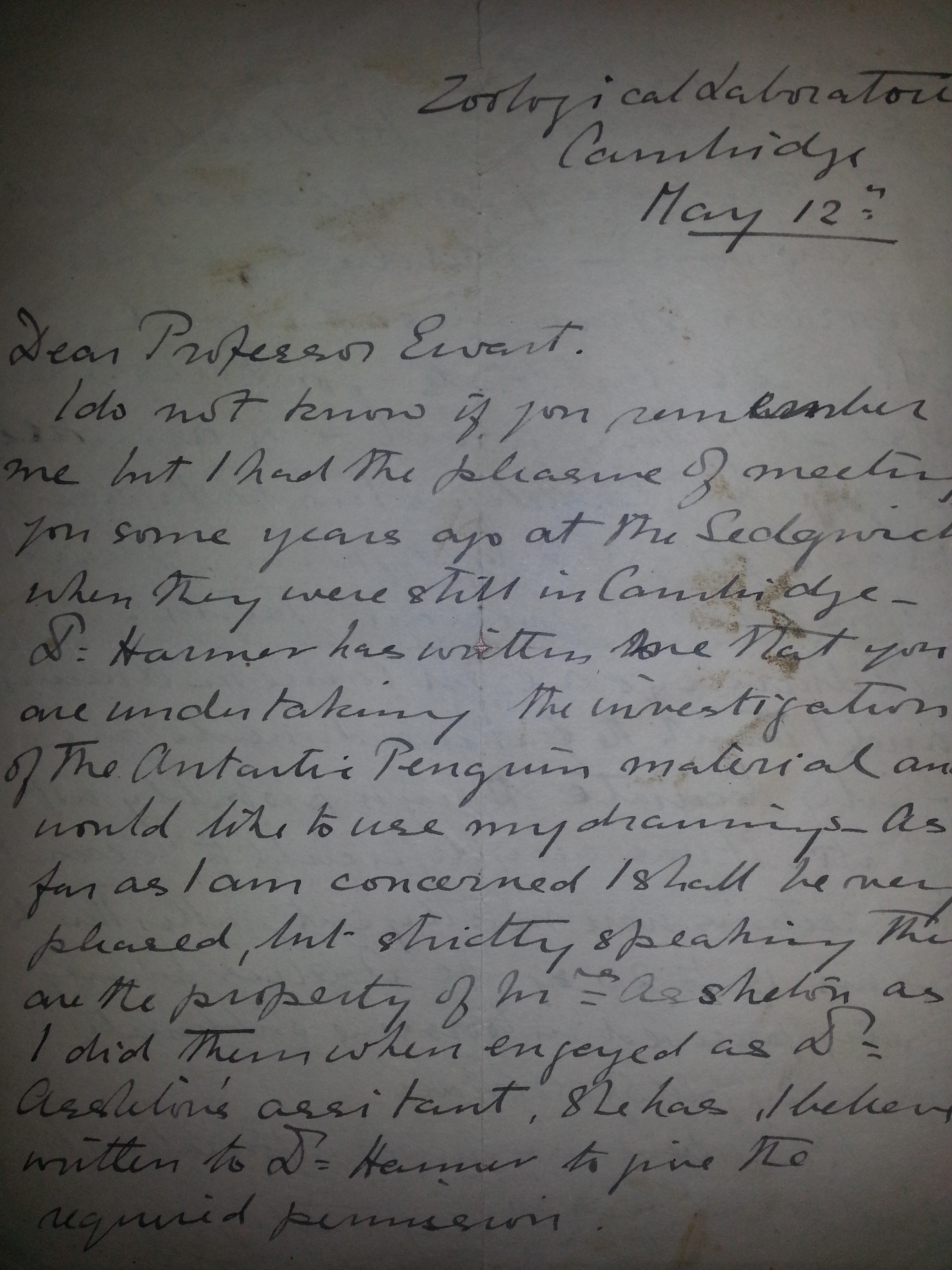 Cataloguing the correspondence of zoologist/animal breeder James Cossar Ewart (1851-1933), I have been intrigued by the various ‘life stories’ which emerge from the letters. Periodically I will be including some highlights in a series of posts entitled ‘letters in the limelight’ .
Cataloguing the correspondence of zoologist/animal breeder James Cossar Ewart (1851-1933), I have been intrigued by the various ‘life stories’ which emerge from the letters. Periodically I will be including some highlights in a series of posts entitled ‘letters in the limelight’ .
We heard last week about Robert Wallace, Professor of Agriculture and Rural Economy at the University of Edinburgh: in this week’s ‘Letters in the Limelight’ we will hear about explorer and naturalist Alfred Russel Wallace (no relation!) who, independently from Charles Darwin, discovered that evolution is governed by natural selection. However, Wallace was a pioneering thinker in a dazzling array of other subjects, including land reform, glaciology, astrobiology, anthropology, socialism and spiritualism. The theory of natural selection came to Wallace in February 1858 when he was suffering from a fever on the remote Indonesian island of Gilolo (now Halmahera). He wrote a detailed essay and sent it to Charles Darwin, who he knew to be interested in evolution. What he didn’t know was that Darwin had been working on the same theory, more or less in secret, for over 20 years. Naturally, Darwin was horrified and asked his friends Charles Lyell and Joseph Hooker for advice. Their response was to combine Darwin’s writing on the subject with Wallace’s essay – without Wallace’s knowledge or permission – and the resulting paper appeared in the Linnaean Society’s Journal in August 1858. Darwin’s On the Origin of Species appeared the following year: Wallace, on the other hand, remained in the Malay Archipelago for another four years.
Considering that James Cossar Ewart corresponded with a vast array of individuals prominent in the field of science, it is hardly surprising that a letter from Wallace appears in his collection of correspondence. However, considering that this year marks his centenary, it was a nice to see his signature appear whilst cataloguing. In the letter, written from Dorset on 07 March 1899, Wallace thanks Ewart for sending him his copy of the Penycuik Experiments (the book, published in that year, in which Ewart was able to disprove the theory of telegony by showing that the influence of a first sire could have no influence on the offspring from subsequent sires). However, he considers that Ewart does not emphasize the importance of breeding in telegony tests from pairs of animals of the same colour as well as the same breed. Going on to discuss of the heredity of characteristics, Wallace contrasts the idea of ‘infection’ (as telegony’ was also known) with ‘prenatal impression’, and tells an anecdotal story to illustrate the theory of ‘the influence of mental impressions of the mother on the offspring’. This curious story, Wallace explains, was told to him by a doctor friend of his:
A gamekeeper had a gun accident which led to the amputation of his right fore-arm, at the North Devon Infirmary at Barnstaple of which Dr Budd was Physician. Being anxious to get home he left before the wound was healed, taking instructions for the dressing, which he said his wife would do for him. His wife however was so nervous that she could not do it, so a friend of hers – the recently married wife of a farmer near – offered to come and do it, which she did, till it was quite healed. About 6 months later this farmer’s wife had a son born without any right fore-arm, the stumps exactly resembling that of the gamekeeper.
This, for Wallace was ‘conclusive’ in proving the theory that maternal impressions, particularly those produced by a shock or unpleasant experience, could contribute to causing deformities in offspring. Although of course we now do not hold with this theory, it certainly makes for a good story! One wonders what James Cossar Ewart would have made of it.
In his own lifetime, Wallace was considered to be the most famous scientist alive. His place in the story of evolutionary science has since been eclipsed by Darwin, but in this his centenary year, there are plenty of opportunities to learn more about this extraordinary man, including The Alfred Russel Wallace website: http://wallacefund.info/ and the Natural History Museum: http://www.nhm.ac.uk/nature-online/science-of-natural-history/wallace/


